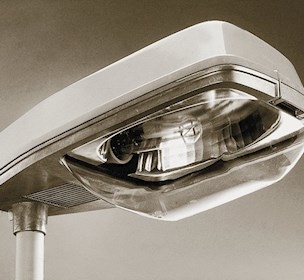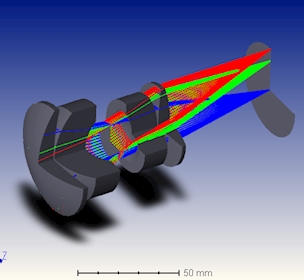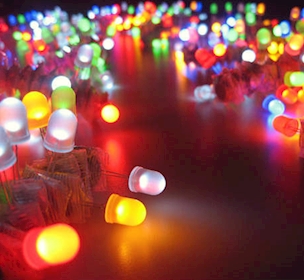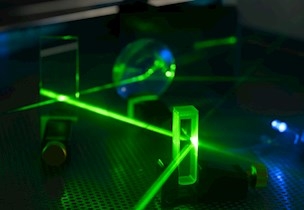Accredited light measurement for quality control and light source optimisation
Validate that your light sources, lighting products, and lighting designs meet applicable requirements and standards with light measurements performed in an ISO 17025-certified laboratory.
Many sectors and markets have specific standards and regulations for light sources and lighting systems. With light measurement, you can be certain that your products meet these requirements. This allows you to avoid potential consequences, such as fixture replacements, fines, and lawsuits.
Light sources and lighting systems must be tested and verified
If you develop and manufacture light sources or lighting products, you have an ongoing need for test and verification to ensure that your products meet customer and regulatory requirements and adhere to applicable standards in the field. Radiometric, photometric, and colorimetric measurements provide you with the confirmation that your products have the desired optical properties and make product design adjustments as needed.
If you are a certifying authority, you need an impartial partner who can conduct tests and take measurements to ensure that products meet specified standards. This way, you can be certain of the safety, quality, and performance of light sources and lighting products on the market, so that these products are safe for consumer use.
Here are some of the benefits of having light measurements performed at an accredited laboratory:
- Impartiality
Light measurements, analyses, and documentation performed in our accredited laboratory are impartial and recognised with DANAK certification, traceable to recognised national meteorological institutes.
- Quality assurance
Light measurements help you ensure that products meet applicable standards and specifications. This way, you can reduce the risk of failures and always document the quality of a product.
- Performance optimisation
Light measurements can identify areas where you have opportunities to improve a product's performance. We can measure and analyse luminous flux, light distribution, colour temperature, luminance, luminous intensity, illuminance, and other relevant parameters to optimise a product, its efficiency, and the quality of the light it outputs.
- Identifying problems and potential fixes
If you experience issues or variances in your light sources or lighting systems, light measurements can enable you to identify and locate problems so that you can make the needed adjustments, fixes, and improvements.
- Improved product development and increased innovation
You can also use light measurement in the product development process to evaluate and improve proto-types or test new concepts. Light measurement makes it possible to quantify and document the effect of design changes and new technologies, so you can better stand out in the market.
Specialised facilities for accurate results
When you choose FORCE Technology, you get access to specialised facilities, including accredited laboratories and testing facilities, that offer you precise, reproducible measurements taken under controlled conditions. These facilities create an optimal testing environment that can be precisely adapted to your needs to ensure that your measurements are reliable and valid.
Our specialists are trained and certified in light measurement techniques, and they stay up to date on the latest standards and methods. This guarantees you light measurements and analyses that conform to industry best practices and applicable quality standards.
Do your light sources and lighting products adhere to the applicable standards?
When you manufacture light sources, fixtures, and other lighting products, adherence to applicable standards is important to ensure that your products are safe for consumers to use.
We can conduct light measurement in accordance with these and other standards:
- EN 13032-1-5:2006+A1:2012 Light and lighting - Measurement and presentation of photometric data of lamps and luminaires
- CIE S 025/E:2015 Test Method for LED Lamps, LED Luminaries and LED Modules
- ISO/CIE 19476:2014 Characterization of the performance of illuminance meters and luminance meters
- EN 14744: 2005 Inland navigation vessels and sea-going vessels – Navigation light
- UL 1104: Second edition, 1998, Standard for Marine Navigation Lights.
- EN 1838:2023 Lighting applications – Emergency lighting
- CIE 130:1998 Practical methods for the measurement of reflectance and transmittance
- CIE 13.3:1995 Method of measuring and specifying colour rendering properties of light sources
- CIE 15:2018, Colorimetry 4th Ed.
- EN/ISO 11664-2:2011 Ed 1.0 Colorimetry — Part 2: CIE standard illuminants
- EN 62471:2008: Photobiological safety of lamps and lamp systems
What kinds of measurements can you request?
Contact us to hear more about how we can help you optimise your lighting products, achieve the best lighting design, or ensure that your products meet applicable standards.

Accredited test of photobiological safety
/Service
Requirements for documenting photobiological safety of products with visible light, IR, and UV.

Accredited tests of retroreflective materials
/Service
Verify compliance of retroreflective materials and sheeting according to relevant standards.

Design of optical systems
/Service
Consultancy and review of optical systems, incl. building, manufacturing and test of prototypes.

RoadSensors retroreflectometers
/Service
Monitor the performance of road markings and traffic signs to ensure road traffic safety.

Development of photonics products and technology
/Service
Get help translating your idea into market-ready photonics products.

LED applications in products
/Service
Get assistance and advice to optimally leverage the use of LED technology in new products.
Development of photonic products
/Service
Start-up assistance and first aid during development of optical systems and photonic products.
Optical chip design
/Service
Low-power, low-cost optical chips for various sensor applications.
Photonics and light
/Service category
Photonics are one of the most important technologies for the products of the future.


